Winged Juno will be blind at Jupiter
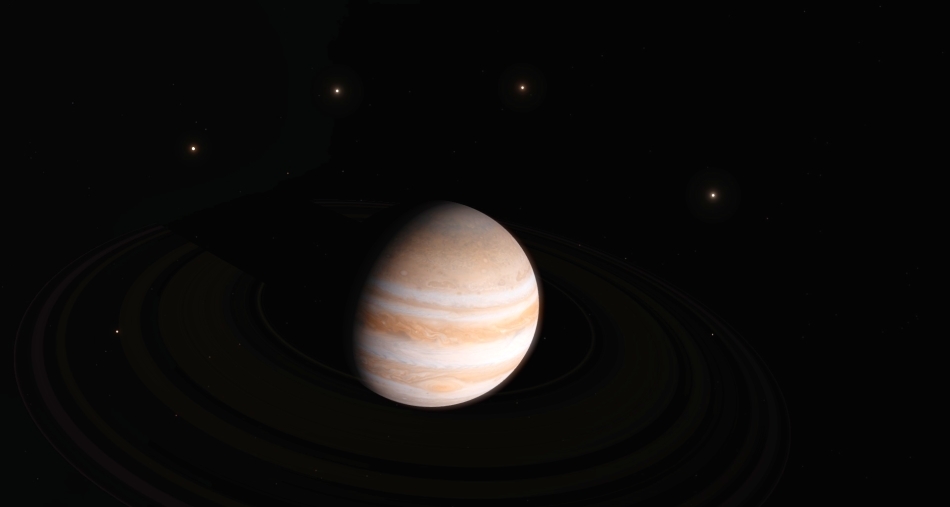
For many years, Jupiter feasted with his beloved in the cold palaces of the outer solar system. Io, Europa and Callisto shared a table with Jupiter, and Ganymede poured wine. But people known for their curiosity, by the power of promethean fire, sent a machine gun to spy on the feast. Those who did not pay due respect to the gods even dared call the submachine gun Juno, in honor of Jupiter’s wife, whom he had not invited to the feast. Then Jupiter became angry, and, beaming intolerably bright aurora, blinded Juno.
Old secrets
According to modern cosmological ideas from all the planets of the solar system, Jupiter was formed first.
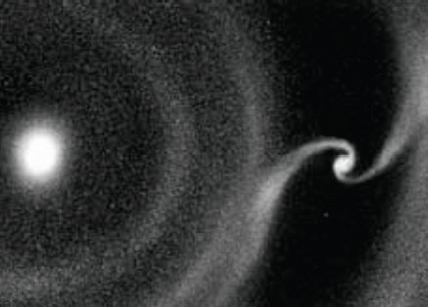
It could look like this.
')
The protoplanetary disk and the Sun should have a similar composition, because they were formed from a substance that was in one place. Therefore, Jupiter would have to be very much like the Sun. However, the Galileo probe, which descended into the atmosphere of a gas giant in 1995, found that scientists were wrong. Helium on Jupiter turned out to be much smaller than on the Sun, and less than it should have been according to calculations. Water vapor, carbon, neon, sulfur, too, was less than expected. But nitrogen in the form of ammonia was found more than estimated. Consequently, our models of the formation of Jupiter and the models of the formation of the Solar System are somehow erroneous.
After the formation, the planet made a rather big journey, shifting in orbit and “eating” a mass that could go for something more useful for the future of humanity (like a big and heavy Mars with a full-fledged atmosphere).

But the absorbed mass could not form the core of the planet - the substance fell into a dense atmosphere at cosmic speeds and had to evaporate from heating. If Jupiter has a nucleus (and modern science is inclined to this), then in the young Solar system a very large embryo of the planet from heavy elements should have been formed, which is contrary to modern models with kilometer-size planetesimals and lunar to terrestrial planets.
Finally, most likely, under the influence of Saturn, both planets moved into the outer solar system, and now Jupiter is drawn at a distance of five astronomical units from the Sun. As a result of mysterious processes in the young Solar System, Jupiter has the largest possible physical diameter (a heavier planet will have a smaller diameter due to greater compression of matter), a mass of three hundred earthly, with its mini-solar system from many satellites and even small rings. Jupiter can be called "the planet on steroids" - because of the huge mass inside the planet, cyclopean scale forces operate, and all the phenomena associated with it, suffer gigantism. Jupiter has a colossal size and power of the magnetosphere (14 times stronger than the Earth), generating giant auroras.
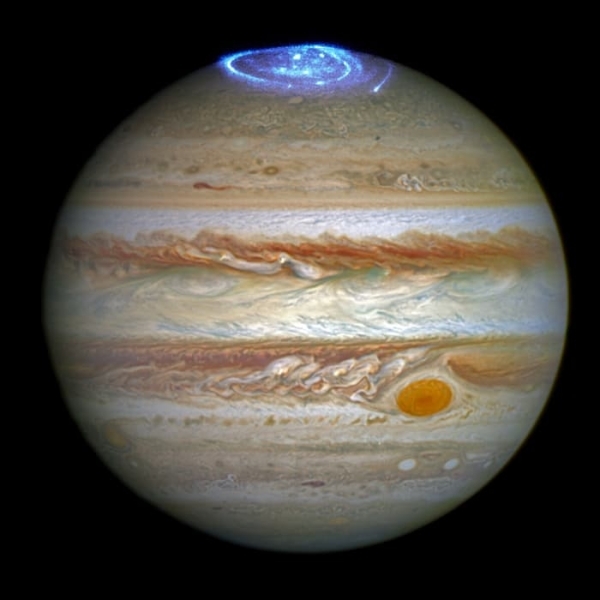
The Yunon probe will plunge into these secrets of the gas giant, which is to go into orbit around Jupiter on the evening of July 4, US time (in Russia there will be morning July 5). The tasks, which will be solved by “Juno”, are easy to remember by the abbreviation PSAM - Origin, Structure, Atmosphere, Magnetosphere.
Science Carousel
PSAM Jupiter Juno will study a diverse set of tools:
The microwave radiometer (MWR) will look 550 kilometers under the cloud edge and will be able to determine the water vapor content in the atmosphere. Structurally, it consists of six antennas on the sides of the device:
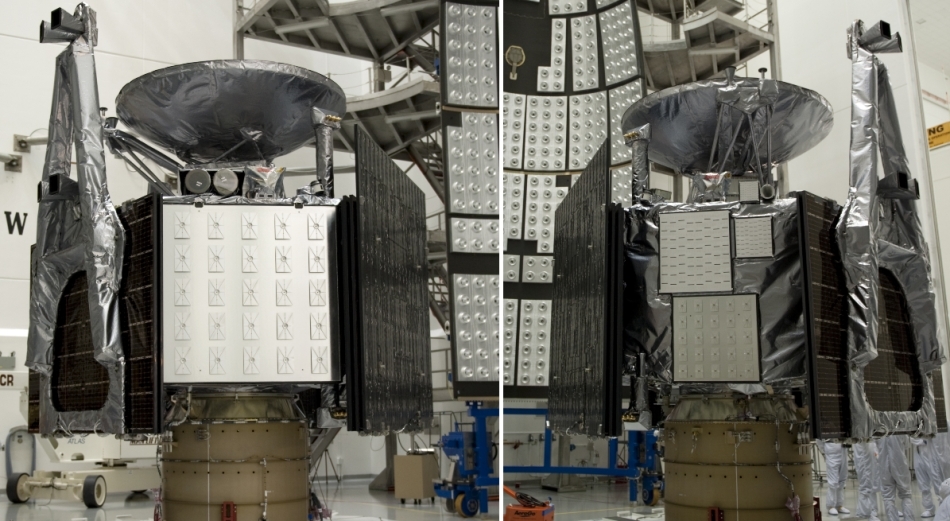
The Gravity Science Experiment will use antennas to communicate with the Earth to determine the gravitational field very accurately. The signal from the Earth will be immediately relayed, and the shift of its frequency due to the Doppler effect will make it possible to determine small changes in velocity due to the unevenness of the gravitational field of Jupiter.
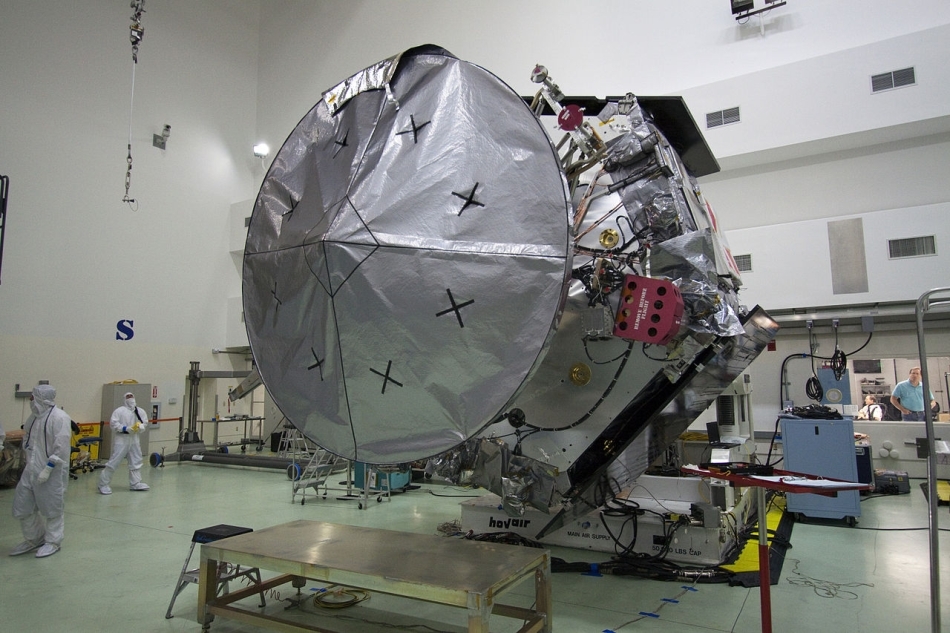
A directional antenna will be used in this experiment.
A magnetometer (MAG) , placed aside at the end of one of the solar panels (this is a standard solution, everywhere magnetometers are trying to remove away from the working electronics of the device) will allow you to create a three-dimensional map of Jupiter’s magnetic field.
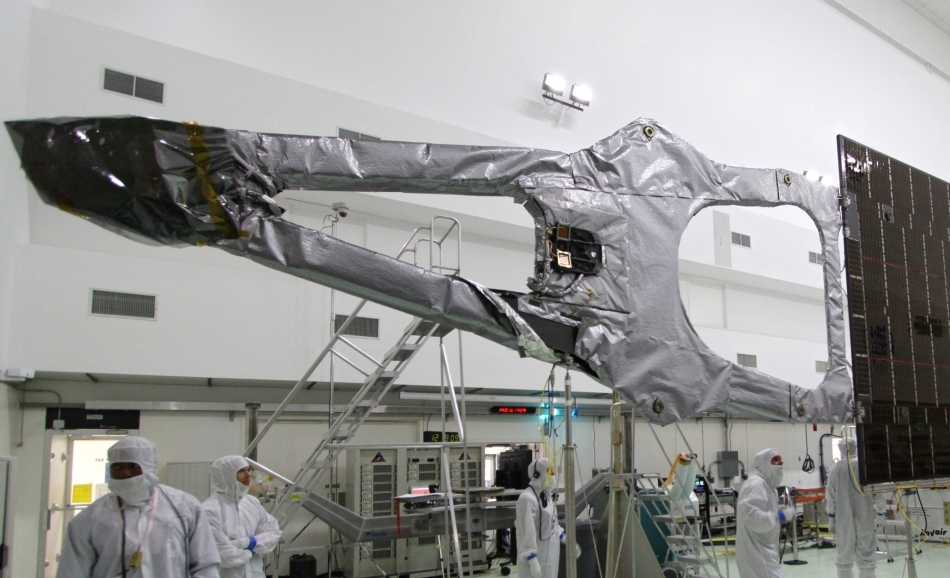
In the experiment the distribution of particles in the aurora borealis (JADE) three electronic sensor and one ion will catch the particles of the aurora.
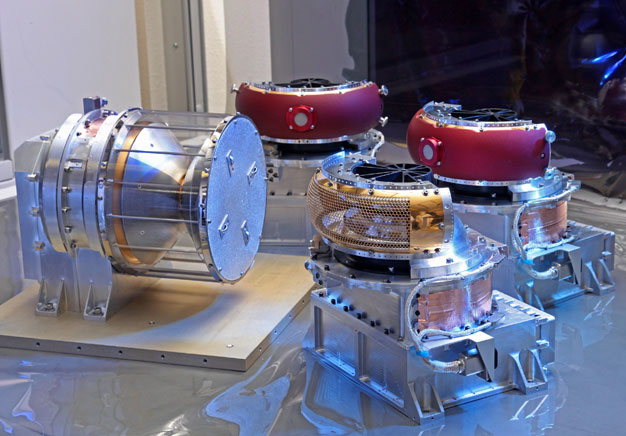
The high-energy particle detector (JEDI) of three identical sensors will determine how high-energy particles flying in the vicinity interact with Jupiter's magnetosphere. A large number of such particles fall into the trap of Jupiter’s magnetic field and burn with aurora at the poles.
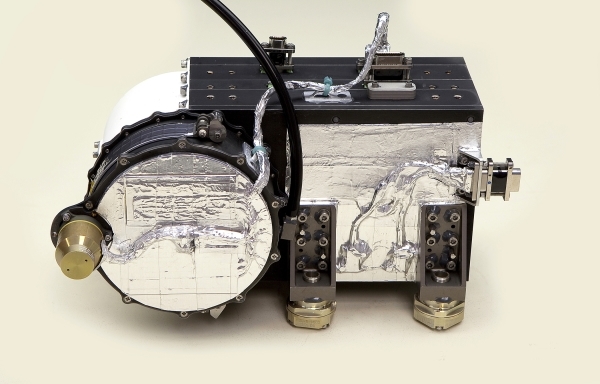
The infrared aurora cartographer (JIRAM) will provide a spectrum of auroras and find out the composition of the atmosphere around them.
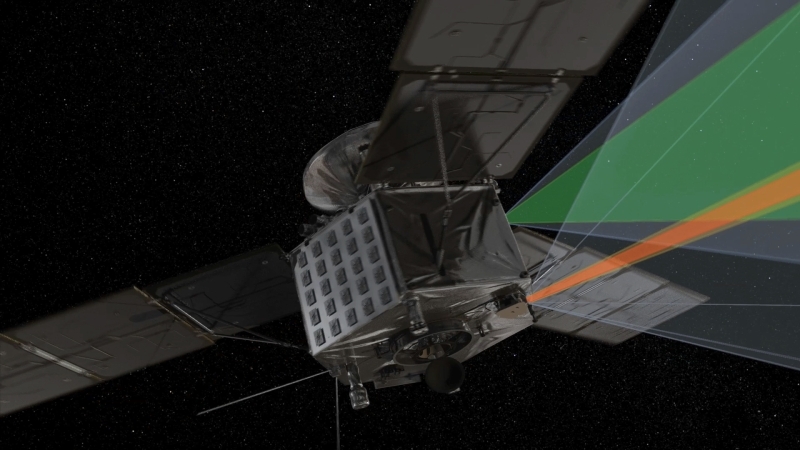
An ultraviolet spectrograph (UVS) will provide an opportunity to remotely find out the composition of the upper atmosphere in a different range, complementing JIRAM.
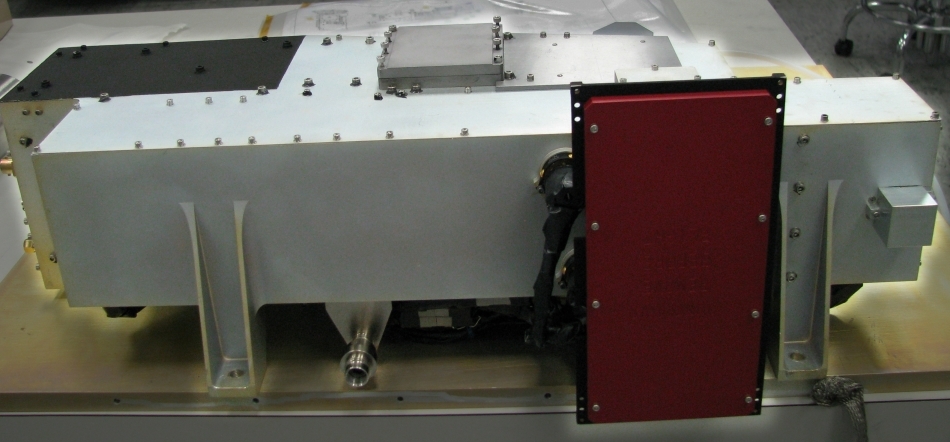
The Waves tool from two antennas will capture radio and plasma waves in the vicinity of Jupiter. One antenna is not structurally very different from those that once stood "horns" on televisions, and the second is a conventional magnetic coil.
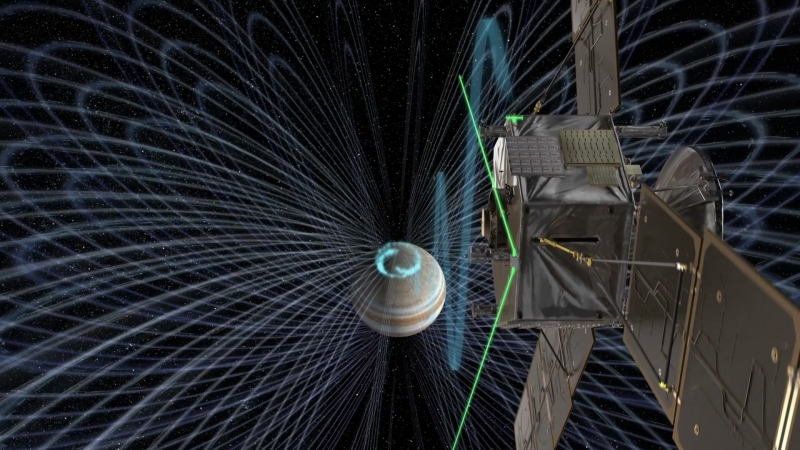
And finally, the JunoCam camera does not carry a serious scientific burden, but is added for the purposes of popularization and public relations. The camera working in the visible light will have to take at least 7 orbits of beautiful photos, and then fail in that radiation hell where the Juno will dive every turn.

All tools are installed on the sides of the apparatus, and, in the working mode of “Juno”, they will either look into the depths of Jupiter, then “rest” and be calibrated, looking in the opposite direction.
Fallout Waltz
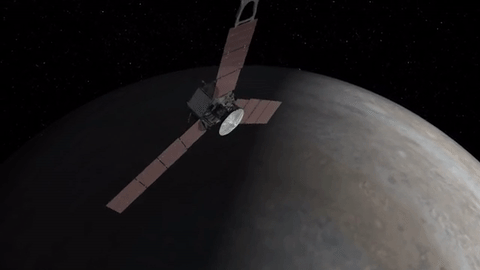
The rotation of "Juno" is a conscious decision. Of the many methods of orientation and stabilization of spacecraft, stabilization by rotation allows one to “free” maintain the desired position along one axis, spending fuel only on promotion of the device and does not require electronics to maintain steady-state orientation. Under the conditions of the most powerful magnetic fields and high-energy particles, a full-fledged three-axis orientation can fail and put the device into protected mode with the loss of the scientific program at this turn, and the Juno spinning wheel will maintain the correct position in case of any failure of any electronics. On the way to Jupiter, “Juno” rotated at a speed of 1 rpm, the working scientific mode is 2 rpm, and for maneuvers the device will spin up to 5 rpm.
Exclusion of electronics from the probe control at the most radiation-hazardous areas is not the only measure to combat the electromagnetic anger of Jupiter. During the mission, the surface of the device will receive a dose of 11 megarad or 110 thousand sievert. For comparison, 1 sievert received at one moment is the beginning of radiation sickness in a person, and a dose of 6 sievert is already deadly. Electronics is stronger than flesh, but such doses would be fatal for her. Therefore, on Juno there is a radiation “shelter” of titanium with a thickness of 1 cm and a total weight of 200 kg. Inside it, electronics should receive only 25 kilorads (250 sievert) for the entire mission, while the electronics are designed for twice the dose. Electronics, which cannot be placed in a bunker, have to be protected on site, for example, more than half of the mass of a star sensor is protected from radiation.
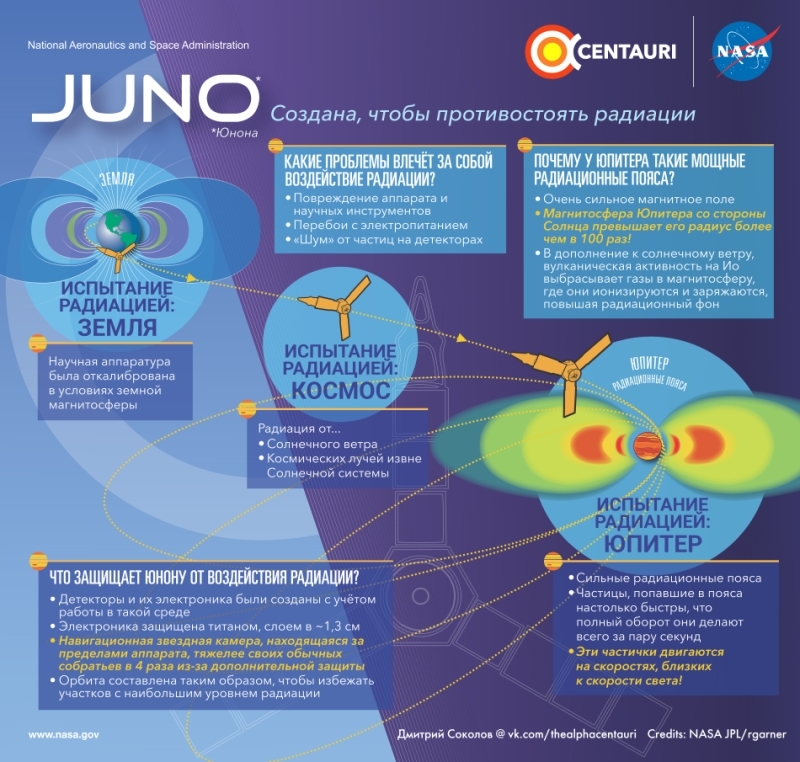
37 jumps to hell
Braking at Jupiter on July 4/5 will be the start of the mission. Reducing its speed by 542 meters per second "Juno" will go into preliminary orbit with a period of 53.5 days. If braking is not successful, the probe will forever warm up with Jupiter. Therefore, at this stage, just in case, they will turn off all scientific instruments so that there will be no random interference. After two orbits in preliminary orbit, Juno will enter a scientific orbit for a period of 14 days.
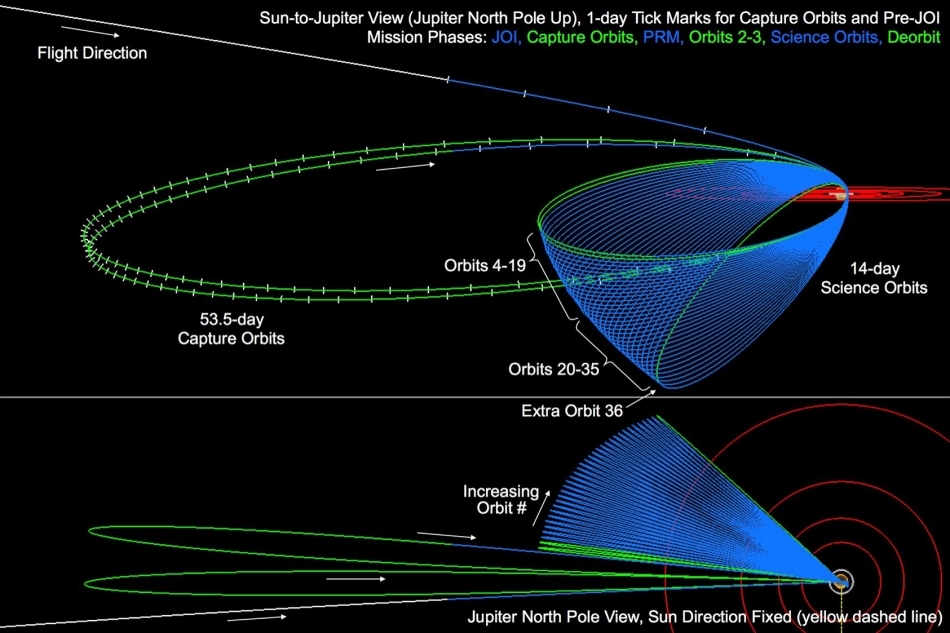
In this highly elliptical orbit, Juno will periodically dive into close proximity to Jupiter (to an altitude of 4-8 thousand kilometers from the cloud level) and again retreat to Callisto orbit. Due to the rotation of Jupiter, the orbit each time will pass over different meridians, and the device will be able to fly over the entire surface, which will allow you to create three-dimensional maps of the entire Jupiter's magnetosphere.
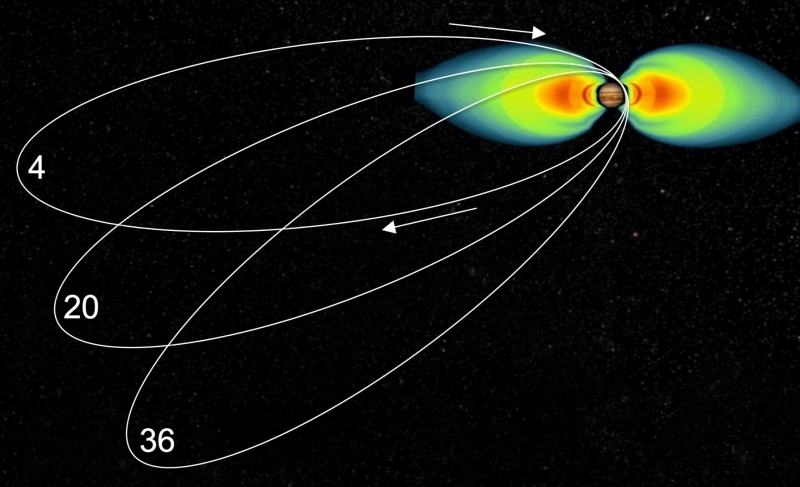
If everything goes according to plan, then on the 37th orbit, the Juno will perform the last maneuver and on February 20, 2018 will burn in the atmosphere of Jupiter.
Poverty and Radiation Deficit
The total cost of the project is estimated at 1.1 billion US dollars in 2011. This is not much for space, therefore, among technical solutions one can find such, which, depending on the mood, can be called a triumph of ingenuity or forced tricks from poverty.
First of all, “Juno” did not fly to Jupiter by a direct route. In order not to use a more load-carrying and more expensive launch vehicle, the probe was launched first beyond the orbit of Mars, and then conducted a gravitational maneuver near the Earth.
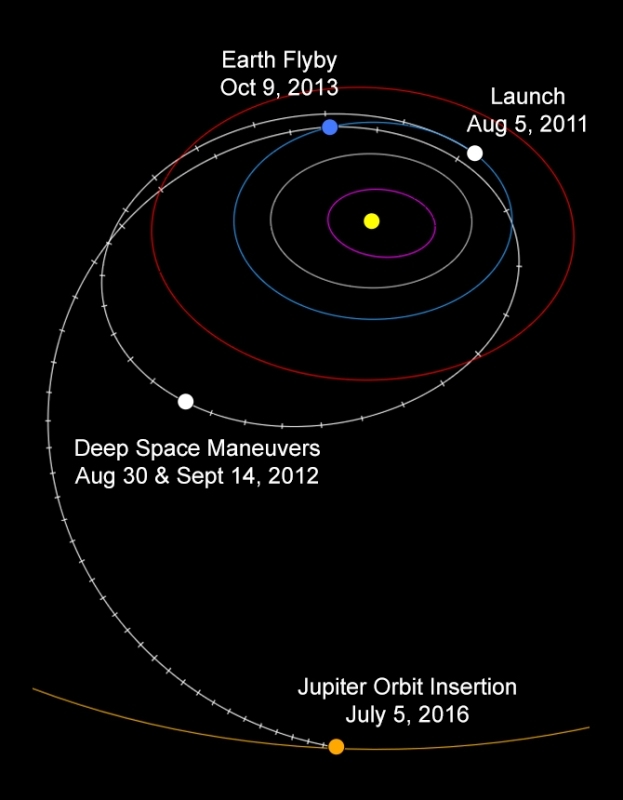
Such a decision made it possible to increase the speed by 70%, but due to the need to return to Earth, “Juno” flew an extra two years. Considering that the development of the apparatus began in 2006, it turns out that people will give this project 12 years of their life. In this case, scientists and engineers will be able to participate in only one, if very lucky, two space projects during their scientific career. And this is a little sad.
Secondly, large solar panels, very high-tech ones, which are so much praised now, are far from an ideal solution. In the orbit of Jupiter (5 AU) "Juno" will receive only 1/25 of the Sun's energy, compared to the Earth's orbit. Therefore, the probe with the opened panels exceeds 20 meters in width, and the weight of the panels is 340 kg. At the same time, a small, lightweight radioisotope generator (RTG) operating without a control system would be a much better choice, providing Yunon with heat and electricity. But in the USA, the production of its plutonium-238 for RTGs was stopped a long time ago, and, for example, “Curiosity” feeds and heats plutonium of Russian origin. In 2013, the production of American plutonium was resumed, but so far it is an expensive and scarce product.
PR burden
In addition to scientific tasks, "Juno" is also engaged in the popularization of science and astronautics, including for children. First, the JunoCam camera was added for our pleasure - it will delight us with beautiful photos of Jupiter during the first seven turns. They even say that the public will be able to take part in the selection of targets for photographing. Secondly, NASA has entered into a partnership agreement with LEGO, and three lego figures are flying on the device: Jupiter, Juno and Galileo Galilei.
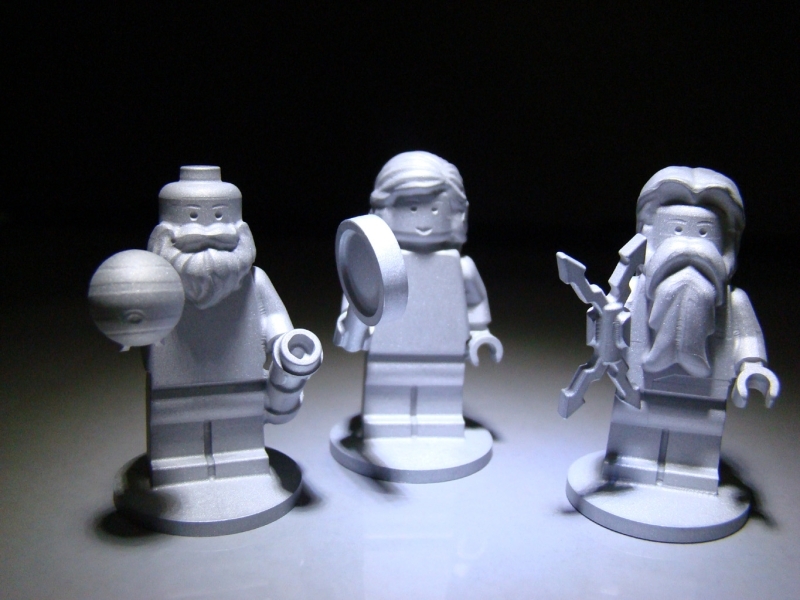

And at the press conference was a model of "Juno" of Lego
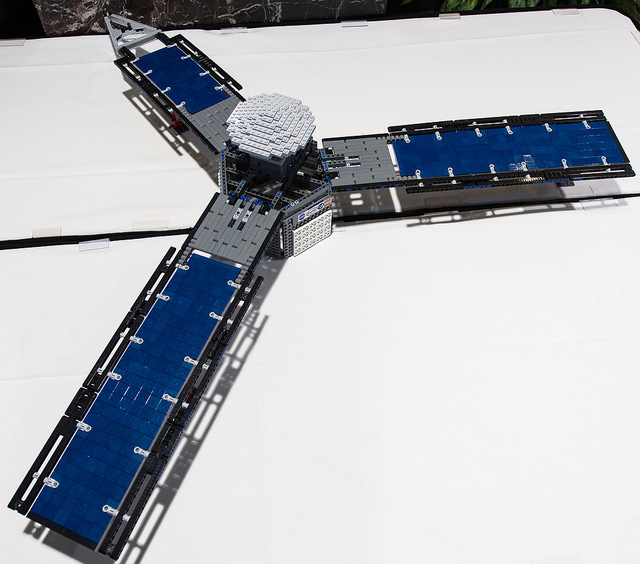
Let's hope that this will inspire some of the future scientists, engineers or astronauts.
Epilogue
We do not know what photos JunoCam will show us. But we know that, flying in a polar orbit, the Juno will look at Jupiter from above and below. To finish on a positive note, I tried to find some spectacular views of what we can see in the coming months. A wonderful planetarium-sandbox SpaceEngine helped me in this.
Jupiter is always visible to us from Earth completely lit. But the device in its orbit can make a photo of the crescent of the planet. A shadow from one of the Galilean satellites additionally decorate the picture.
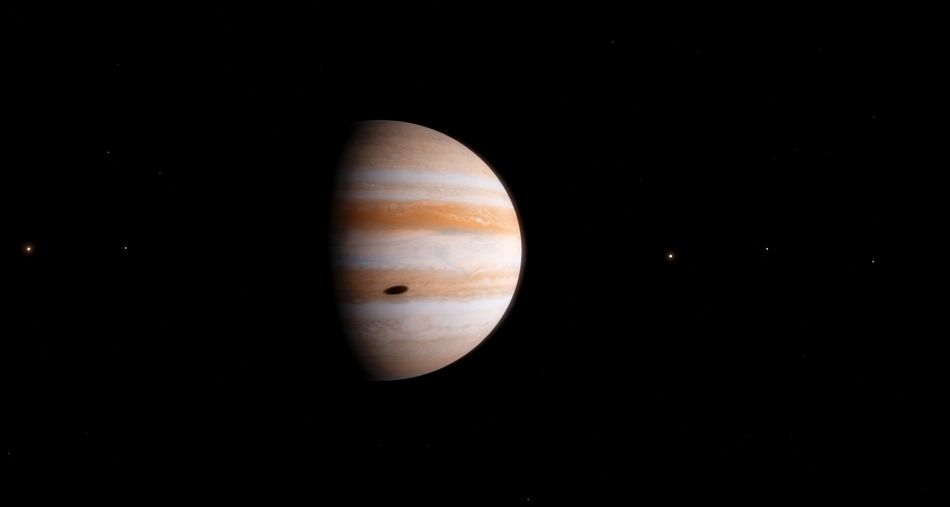
Four Galilean satellites often form spectacular figures. In the background you can see the creation of Orion and the Pleiades.
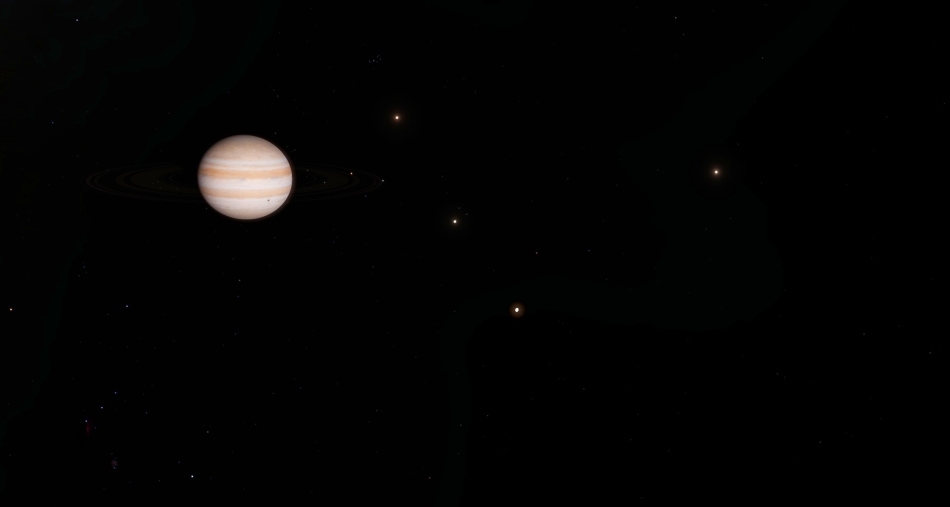
You can see a straight line.
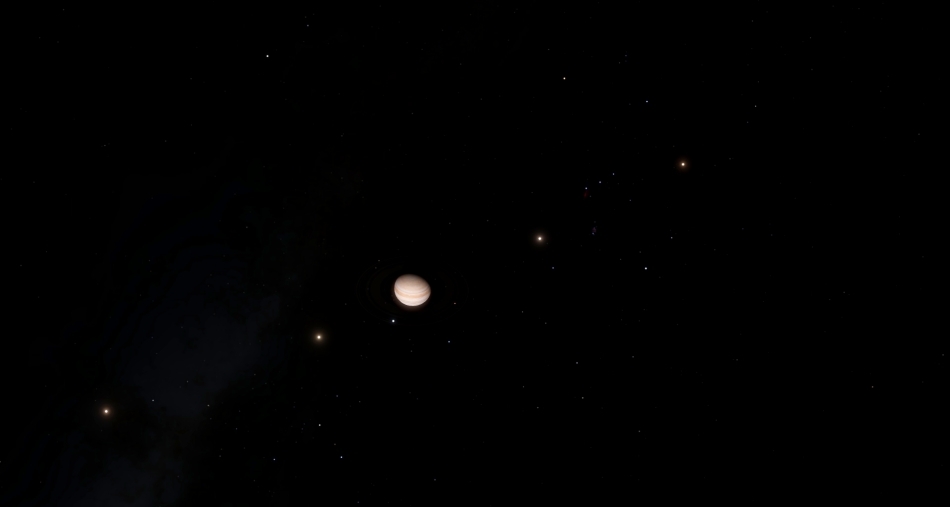
View of the North Pole and the Magellan Clouds.

View of the South Pole and the constellation Ursa Major.
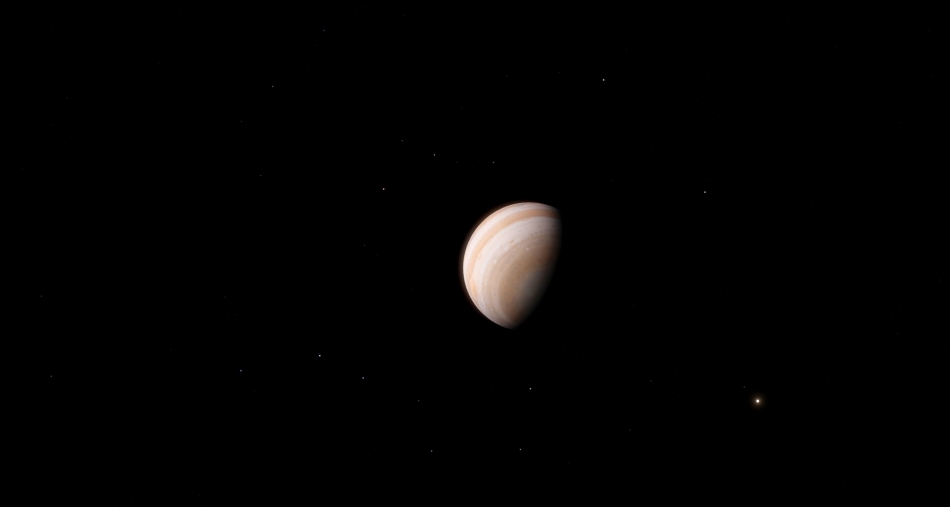
Source: https://habr.com/ru/post/372419/
All Articles